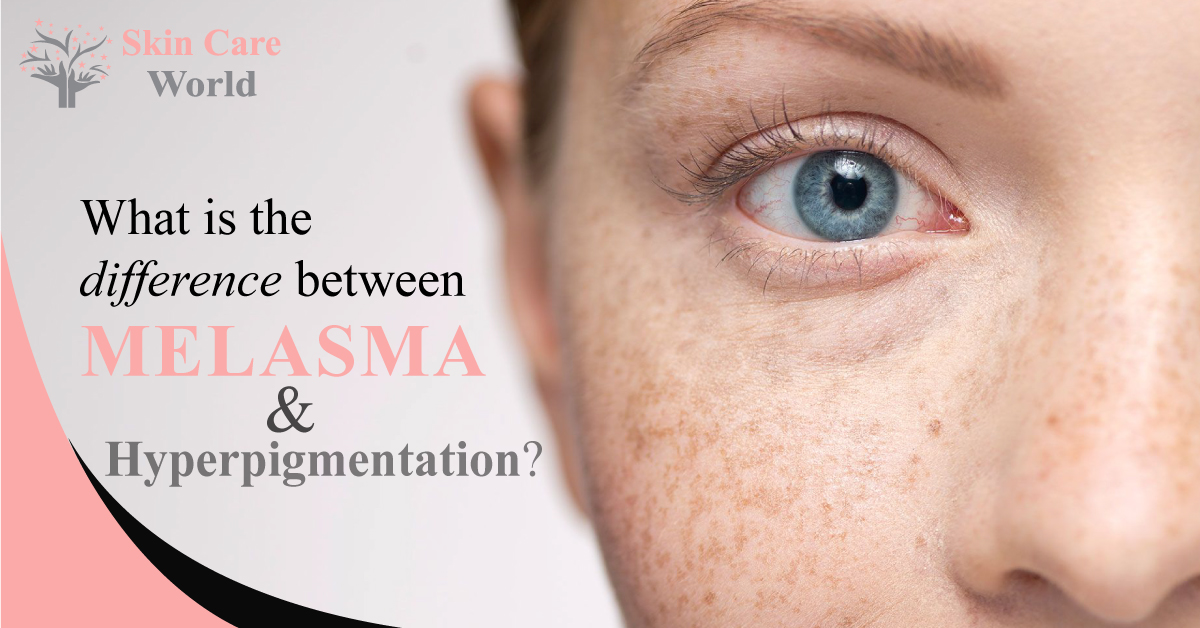
It can be challenging to distinguish between hyperpigmentation and melasma if you have dark areas on your skin. While they are two different dermatological illnesses, they can seem and behave similarly, caused by the same factors. To assist you in identifying between the two, the melasma doctor looks at the similarities and distinctions between hyperpigmentation and melasma.
Hyperpigmentation is a broad word that refers to any skin disorder that causes the skin to appear darkened and discoloured. This could be due to skin damage caused by sun exposure, acne scars, or even a flare-up resulting in redness and swelling. Hyperpigmentation can take several forms, including:
Acne, UV rays from the sun, and skin rashes can all stimulate the creation of pigment-producing cells in the skin (melanocytes) and cause them to produce more pigment than usual.
The longer the cause of hyperpigmentation persists, the more difficult it will be to treat. This means that skin darkening caused by prolonged exposure to the sun may be more difficult to remove than hyperpigmentation caused by a recent acne breakout, for example.
Hyperpigmentation is a term used to describe various skin problems in which one area of the skin becomes noticeably darker than the surrounding skin, causing patchiness and discolouration. Hyperpigmentation can relate to multiple skin issues, including liver spots, freckles, and, yes, melasma.
Many things can cause hyperpigmentation, such as medication or scarring, the most common cause of hyperpigmentation is, you guessed it, sun exposure. The need for sun protection and awareness of long periods spent in the sun cannot be overstated.
Although hyperpigmentation or sunburns are the most evident signs of UV overexposure, excessive sun exposure can swiftly progress to more severe illnesses such as skin cancer.
Melasma is a type of hyperpigmentation that affects the skin. It differs from hyperpigmentation because a hormonal shift typically causes it.
The following characteristics distinguish melasma:
Melasma manifests itself on the face as blotchy hyperpigmentation, particularly on the cheeks, bridge of the nose, forehead, chin, and upper lip. Melasma can form on other body parts, although rare and not very prevalent.
Melasma is more likely to develop in regions with a lot of sun exposure. Melasma improves in the winter for many people, but it returns in the summer due to sun exposure.
A hormonal change of any kind can also trigger melasma. Hormonal changes can include the following:
Melasma is tough to treat, and treatments haven\'t had the same level of success as other types of hyperpigmentation. Melasma therapies are determined by the degree of your melasma. The most critical item which they cannot emphasise enough is SPF!
Melasma can be treated with the following remedies:
Wearing sunscreen is critical no matter what course of therapy you choose for your melasma.
Another distinguishing trait of melasma is the difficulty of melasma treatment. Topical lotions and ointments can typically be used to cure hyperpigmentation, although melasma is more challenging to treat. It\'s challenging to get rid of those diseases because a hormonal shift mainly causes them.
Melasma is more resistant to treatment than other forms of hyperpigmentation. When treating melasma, changing a person\'s hormone makeup isn\'t an option, and each person will react differently to different treatment options.
As previously said, determining if you have hyperpigmentation or melasma on your skin might be difficult. Both illnesses are pretty frequent, have similar symptoms, and are induced by comparable triggers.
While it\'s critical to identify the two, it\'s also crucial to understand the numerous treatments that can help with both. Most therapies are similar; however, because melasma is affected by hormonal changes, prophylactic treatment is sometimes unattainable. As a result, they only use topical treatments.
Remember that visiting the melasma clinic before deciding on skincare treatment regimens and routines is always a good idea. Consider scheduling a session to understand better and determine the best course of action and your specific requirements.

